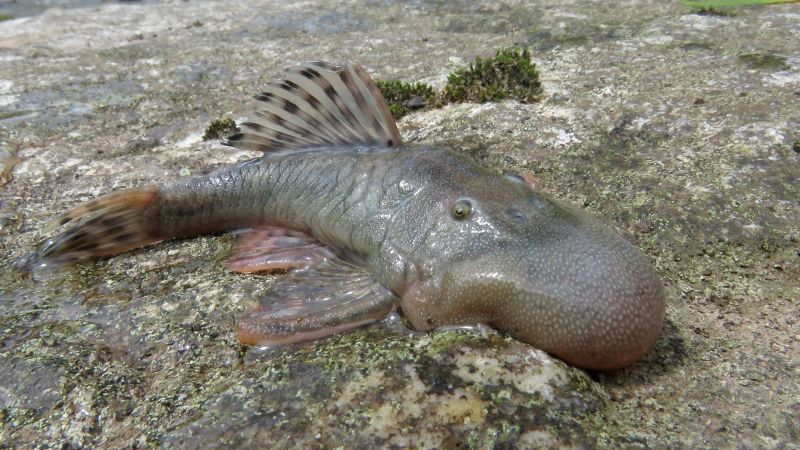In an exciting recent expedition, researchers unearthing new biological treasures in the heart of Peru have identified 27 animal species that have never before been documented in scientific literature. Among these remarkable discoveries are unusual creatures like a “blob-headed fish” and a unique type of semi-aquatic mouse that highlight the diversity that exists within our planet’s ecosystems, even in areas that are heavily influenced by human activities.
The groundbreaking survey was conducted by Conservation International, a notable environmental non-profit organization dedicated to preserving the richness of biodiversity. The team’s ambitious endeavor unfolded over a 38-day period in 2022 within the Alto Mayo landscape of northwestern Peru. This expansive area, covering approximately 1.9 million acres, comprises a mix of forest and agricultural environments, showcasing a variety of ecosystems that have yet to be fully documented.
Despite the dense human population in this region, the intricate biodiversity has remained largely unexplored, leading researchers to fill in gaps regarding ecological data through their rigorous study. Remarkably, the expedition yielded an unexpected bounty of discovery, uncovering four new mammal species, eight new fish species, three types of amphibians, and an impressive ten butterfly species, a testament to the richness of life that thrives in this habitat.
New findings regard a species being classified as “new to science” when it has never undergone the formal scientific nomenclature process. According to Trond Larsen, the researcher leading the expedition and director of the Rapid Assessment Program at Conservation International, the team was astonished by the level of biodiversity they encountered, particularly in a landscape marked by considerable human impact.
Among the more stunning discoveries was a novel amphibious mouse with webbed toes, remarkably adapted for a semi-aquatic existence. This particular group of rodents is considered exceedingly rare, highlighting the delicate balance of life in such ecosystems. The researchers identified this previously unknown mouse species in a small area of swamp forest that faces threats from agricultural encroachment, thus elevating its significance for conservation efforts.
In addition to the mouse, other mammals newly cataloged were a spiny mouse, a short-tailed fruit bat, and a dwarf squirrel. The survey also birthed the description of the “blob-headed fish,” aptly named for its distinctively enlarged, gourd-like head. Fish specialists involved in the project noted that this anatomical feature is unprecedented and remains a mystery—speculations suggest it may play a role in food detection.
The survey proved extensive, as researchers recorded a total of 2,000 species across the landscape, which bridges the Andes and the Amazon, traversing areas populated by Indigenous communities as well as urban centers. Of these observed species, 49 were flagged on the International Union for the Conservation of Nature’s (IUCN) Red List as threatened with extinction.
The researchers’ findings are pivotal for implementing sustainable conservation strategies, particularly as threats from deforestation and farming burgeon. Gaining insights into the biodiversity of a region often bolsters the case for protecting these ecosystems against rapid degradation.
Importantly, although these discoveries were previously unknown in scientific circles, they are not entirely new to local communities. Engaging Indigenous researchers was a cornerstone of the expedition, underlining a cooperative approach that exerts a significant impact on ongoing conservation initiatives. Yulisa Tuwi, an Awajún woman who participated in the research, expressed a strong connection between her community and nature, highlighting that this collaboration aims to safeguard her people’s culture and their resources.
The collaborative efforts of the expedition portray a holistic understanding of biological research that respects Indigenous knowledge and addresses conservation in a manner harmonious with local communities. This research not only enlightens the global scientific community but also cultivates awareness among local populations regarding the vital connection between their traditions and the natural world.
To summarize, this fascinating expedition in Peru not only reveals new species and their potential roles within the ecosystem but also emphasizes the intersection of scientific research, conservation, and Indigenous knowledge. As we strive for global biodiversity goals amidst challenges, discoveries like these serve as a beacon of hope and a call to action in protecting the delicate fabric of our planet’s natural heritage.



